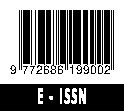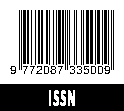Memaknai Strategic Communication
Abstract views: 2377 | pdf downloads: 1800
Abstract
Strategic communication merupakan konsep dan kajian yang relatif baru dalam ilmu komunikasi. Sebelumnya, konsep strategic communication banyak digunakan dalam kajian militer dan ilmu pemerintahan terkait dengan internasional relations. Sebagai konsep baru, tidak mengherankan jika banyak perbedaan pandangan tentang makna strategic communication, terkait dengan posisi ilmu komunikasi, kesamaanya dengan public relations dan corporate communication, sampai paradigma yang digunakan. Artikel ini telah mengeksplorasi berbagai makna tentang strategic communication dengan tujuan memaknai strategic communication yang berbasis ilmu komunikasi dengan menolak sikap taken-for-granted sebagai bagian dari management strategy. Berangkat dari penjelasan tersebut dan dengan menggunakan metode literature review, strategic communication dimaknai sebagai proses komunikasi antar aktor dalam organisasi yang diwujudkan dalam bentuk interaksi yang saling memahami dan bekerjasama untuk mencapai tujuan organisasi dengan berbasis paradigma postmodernisme.
References
Argenti, P.A., Howell, R.A., & Beck, K.A. (2005). The Strategic Communication Imperative. MIT Sloan Management Review, 46(3), 82-89.
Argenti, P.A. (2017). Strategic Communication in the C-Suite. International Journal of Business Communication, 54(2), 146–160.
Bratianu, C. (2015). Organizational Knowledge Dynamics: Managing Knowledge Creation, Acquisition, Sharing, and Transformation. Hershey: IGI Global. DOI: 10.4018/978-1-4666- 8318-1.ch012
Cheney, G., Christensen, L. T., Zorn, T., Jr., & Ganesh,
S. (2011). Organizational Communication in an Age of Globalization: Issues, Reflections, Practices (2nd ed.). Long Grove, IL: Waveland.
Cooren, F. (2006). Arguments for the in-depth study of organizational interactions: A rejoinder to McPhee, Myers, and Trethewey. Management Communication Quarterly, 19, 327–340.
Bolderston, A. (2008). Writing an Effective
Literature Review. Journal of Medical Imaging and Radiation Sciences, 39, 86-92.
Deborah Davis & Barbara J. Daley (2008) The learning organization and its dimensions as key factors in firms' performance. Human Resource Development International, 11(1), 51-66.
Denney, A.S., & Tewksbury, R.T. (2012). How to Write a Literature Review, Journal of Criminal Justice Education,
DOI:10.1080/10511253.2012.730617.
Dervin, B. (1991). “Information as Nonsense; Information as Sense: The Communication Technology Connection.” Dalam H. Bouwman, P. Nelissen, & M. Vooijs (Eds.), Between Offer and Supply. Amsterdam, The Netherlands: Cramwinckel, 44-59.
Estaswara, H. (2015). Integrated Marketing Communications (IMC): Extended Version or New Idea? Journal of Global Academic Institute Education & Social Sciences, 1(2), 123-139.
Estaswara, H. (2016). Integrated Marketing Communication (IMC) in Higher Education in Indonesia. Polish Journal of Management Studies, 14(1), 74–83.
Farwell, J.P. (2012). Persuasion and Power: The Art of Strategic Communication. Washington, DC, Georgetown University Press.
Freeman, R.E. (1984). Strategic Management: A Stakeholder Approach. Marshfield, MA: Pitman.
Falkheimer, J. & Heide, M. (2014). From Public Relations to Strategic Communication in Sweden: The Emergence of a Transboundary Field of Knowledge. Nordicom Review, 35(2), 123-138.
Farwell, J. (2012). Persuation and Power: The Art of Strategic Communication. Washington DC: Georgetown University Press.
Grunig, J. (2006). Furnishing the Edifice: Ongoing Research on Public Relations as a Strategic Management Function. Journal of Public Relations Research, 18, 151-176.
Grunig, J. (2011). Public relations and strategic management: Institutionalizing organization– public relationships in contemporary society. Central European Journal of Communication, 1: 11-31.
Hallahan, K., Holtzhausen, D., van Ruler, B., Verčič, D., & Sriramesh, K. (2007). Defining Strategic Com¬munication. International Journal of Strategic Communication, 1(1), 3-
Holmström, S., Falkheimer, J., & Nielsen, A.G. (2009). Legitimacyand Strategic Communication in Globalization: The Cartoon Crisis and Other Legitimacy Conflicts. International Journal of Strategic Communication, 4(1), 1-18.
Holtzhausen, D., & Zerfass, A. (2014). “Strategic Communication: Opportunity and Chalanges in the Research Area.” Holtzhausen, D.R., & Zerfass, A. (Eds.). The Routledge Handbook of Strategic Communication. New York, NY:Routledge, 3-17.
Holtzhausen, D.R., & Zerfass, A. (Eds.). (2014). The Routledge Handbook of Strategic Communication. New York, NY: Routledge.
Holtzhausen, D.R., (2000). Postmodern Values in Public Relations. Journal of Public Relations Research, 12(1), 93–114.
Jarzabkowski, P., Balogun, J., & Seidl, D. (2007). Strategizing: The Challenges of a Practice Perspective. Human Relations, 60, 5-27.
Kaehler, B., & Grundei, J. (2019). HR Governance A Theoretical Introduction. Springer.
Klerk, N.O., & Sonja Verwey, S. (2013). Towards an emerging paradigm of strategic communication: Core driving forces, Communicatio. South African Journal for Communication Theory and Research, 39(3), 362-382.
Lyotard, J.F. (1992). Answering the question: What is postmodernism? In C. Jencks (Ed.), The postmodern reader. London: Academy Editions, 138–150.
Levy, Y., & Ellis, T. J. (2006). A Systems Approach to Conduct an Effective Literature Review in Support of Information Systems Research. Informing Science Journal, 9, 181-212.
Madalina, O. (2016). Conflict Management, a new challenge. Procedia Economics and Finance, 39, 807-814.
Marchiori, M., & Bulgacov, S. (2012). Strategy as Communicational Practice in Organizations. International Journal of Strategic Communication, 6, 199-211.
McAuley, J., Duberley, J., & Johnson, P. (2007). Organization theory: Challenges and perspectives. UK: Pearson Education.
McPhee, R.D., & Zaug, P. (2000). The Communicative Constitution of Organizations: A Framework for Explanation. Electronic Journal of Communication, 10(1/2), 1–16.
Mumby, D.K. (2011). Reframing difference in organizational communication studies: Research, pedagogy, practice. Thousand Oaks, California: Sage Publications.
Nothhaft, H., Werder, K.P., Verčič, D., & Zerfass, A. (2018) Strategic Communication: Reflections on an Elusive Concept. International Journal of Strategic Communication, 12(4), 352-366.
Sandhu, S. (2009). Strategic Communication: An Institutional Perspective, International Journal of Strategic Communication, 3(2), 72-
Schoeneborn, D., & Vàsques, C. (2017). “Communicative Constitutive of Organisation.” The International Encyclopedia of Organizational Communication. Dalam Scott, C.R., & Lewis, L. (Editors-in-Chief), Barker, J.R., Keyton, J., Kuhn, T., & Turner, P.K. (Associate Editors). John Wiley & Sons, Inc.
Smith, B.G. (2013). The Internal Forces on Communication Integration: Co-Created Meaning, Interaction, and Postmodernism in Strategic Integrated Communication. International Journal of Strategic Communication, 7, 65-79.
Steyn, B. (2003). From strategy to corporate communication strategy: A conceptualization. Journal of Management Communication, 8, 168-182.
Thomas, F. & Stephens, J. (2015). An Introduction to Strategic Communication. International Journal of Business Communication, 52(1), 3-11.
Turkalj, Z., Fosić, I., & Dujak, D. (2008). Conflict Management in Organization. Interdisciplinary Management Research, 4: 505-515.
Torp, S.M. (2014). “The Strategic Turn in Communication Science: On the History and Role of Strategy in Communication Science from Ancient Greece until the Present Day.” Holtzhausen, D.R., & Zerfass, A. (Eds.). The Routledge Handbook of Strategic Communication. New York, NY:Routledge, 34-52.
van Ruler, B. (2018). Communication Theory: An Underrated Pillar on Which Strategic Communication Rests. International Journal of Strategic Communication, 12(4), 367-381.
Volk, S.C., & Zerfass, A. (2018). Alignment: Explicating a Key Concept in Strategic
Helpris Estaswara et.all Communication. International Journal of Strategic Communication, 12(4), 433-451.
Werder, K.P., Nothhaft, H., Verčič D., & Zerfass, A. (2018). Strategic Communication as an Emerging Interdisciplinary Paradigm. International Journal of Strategic Communication, 12(4), 333-351.




















